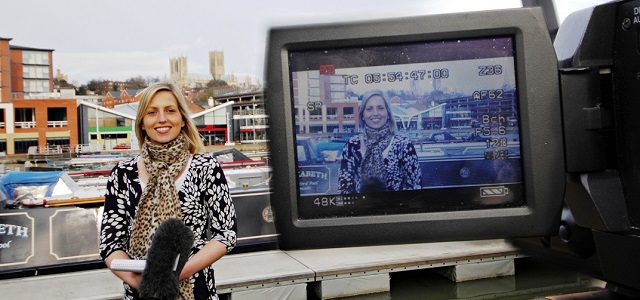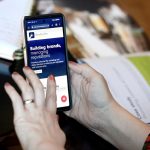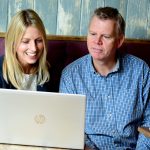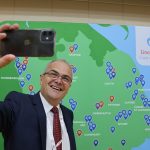Going Live in Three… Two… One!
 Unless you’ve been living under a rock for the last week, the chances are you’ll have seen Professor Robert Kelly’s (hilarious) Skype interview for BBC News.
Unless you’ve been living under a rock for the last week, the chances are you’ll have seen Professor Robert Kelly’s (hilarious) Skype interview for BBC News.
During his interview about the political landscape in South Korea, which was aired live on BBC News, his two small children can be seen entering the room, quickly followed by his wife who frantically removes them.
But it’s not the first interview of its kind to have gone viral for all the wrong reasons. Other famous examples include the time BBC News interviewed the wrong ‘Guy’ and Jeremy Paxman’s arguably most infamous interview, with Michael Howard, in which he had to ask the same question 12 times!
For most people, the prospect of being interviewed generates anxiety at the best of times – let alone when it’s being conducted live. However, there are ways to limit, if not overcome, this anxiety.
Preparation, preparation, preparation
Ever heard the expression ‘Preparation is key’? How about ‘Fail to prepare, prepare to fail’? These may have been plastered on your school/college/university/bedroom walls, and for good reason. Preparation will never go out of fashion and, although you can’t anticipate everything, you can ensure you’re aware of possible scenarios.
Dry runs are crucial: practice alternative scenarios with a PR professional or colleague so you can avoid being caught off guard. Talk through or act out potential situations to help maintain your focus and versatility should anything unexpected occur during the interview.
Control what you can control
Be sure to review the environment from which you’ll be interviewed. If, like Professor Kelly, you are taking part in an interview from home, you can control certain things such as the lighting, background and camera angle.
Remove or limit knick-knacks and photos or artwork; close windows and, if necessary, lock doors to limit the risk of being interrupted and your audience or interviewer being distracted.
Even if you won’t be at home, be aware of any prospective distractions such as colleagues, traffic noise or even the general public!
Body talks
Experts say that only 7% of communication is verbal, while 93% is non-verbal and much of this (55%) is made up of body language.
Professor Kelly’s angst is palpable throughout his interview, and work-from-home parents the world over could relate to the situation that unfolded.
However, he remained professional despite the unexpected interruptions which is incredibly important. Be sure to maintain eye contact and a strong posture to keep the interview on track.
When conducting your dry runs, why not record them so that you can look out for eye contact, posture and body language? Identify facial reactions and certain quirks that can be avoided to prevent the message being lost.
Keep rolling (rolling, rolling…)
Another valuable lesson from Professor Kelly’s interview taught us that sometimes you’ve just got to roll with a situation; in his case, a slight laugh followed by some sincere apologies was all it took for the interviewer to move on with the interview.
Again, adequately preparing for an interview will help massively for this technique. It’s always a good idea to do some research into the person who will be interviewing you to find out their typical style, common lines of questioning and their personality, so you’re ready to roll with whatever comes up.
It’s really not as bad as you think…
Yes, really. You shouldn’t let the threat of the unexpected deter you from putting yourself forward for an interview. In the case of Professor Kelly, he left that interview with the belief that he would never be invited to do another, but instead he became an internet sensation overnight.
Any worthy PR professional will always advise you that it’s better to say something, than to say nothing at all – even if you have to struggle to get your voice heard!
Written by Zoe Lamb, Account Executive.
This article was originally published by Lincolnshire Business on 16th March 2017.









